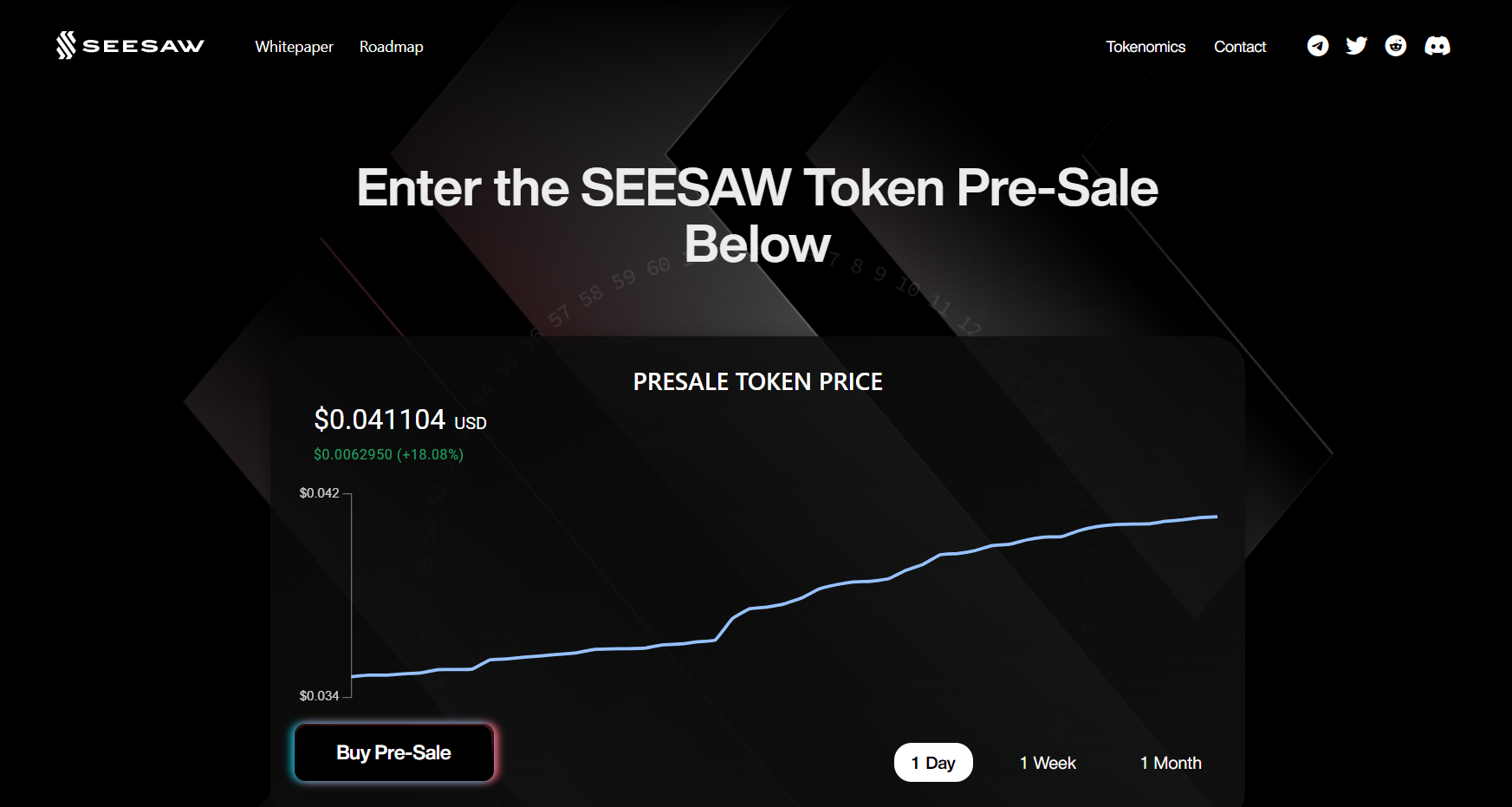
Top-tier EVM-compatible blockchains will have one more interoperability bridge
Contents
- Bridging the gap between Ethereum, BSC and Polygon: What is Seesaw Protocol?
- Pre-sale campaign is live
While cross-blockchain interoperability remains one of the most sensitive bottlenecks for DeFi, Seesaw Protocol with its SSW token is going to address this issue in a novel way.
Bridging the gap between Ethereum, BSC and Polygon: What is Seesaw Protocol?
Introduced by seasoned Web3 developers in late 2021, Seesaw Protocol comes with a one-of-a-kind concept of a holistic blockchain-agnostic interoperability vehicle.

As stated in Seesaw Protocol’s whitepaper, it is designed as ‘a fully on-chain liquidity protocol that can be implemented on any smart contract-enabled blockchain’. As such, in future releases, Seesaw Protocol has all chances to become a Polkadot-style interoperability layer for mainstream programmatic blockchains.
Unlike major ‘bridges’ (Solana-Ethereum Wormhole, Anyswap, etc.), Seesaw Protocol is an open-source standard for liquidity pools. With its instruments, traders and liquidity providers can choose the most resource-efficient blockchain out of all available ones.
In inaugural versions of Seesaw Protocol, users can choose between Polygon, Ethereum, and Binance Smart Chain, three most popular blockchains compatible with Ethereum Virtual Machine. Thus, Seesaw is a one-stop end-point for DeFi-centric liquidity primitives: AMMs, lending/borrowing, stablecoins, and so on.
Users can move value between the integrated blockchains with a 1 percent fee only which is way more cost-efficient than that of competitors. Also, Seesaw Protocol is more attack-resistant than that of its alternatives, therefore users shouldn’t worry anymore about the security of their funds locked in the bridge’s smart contracts.
Pre-sale campaign is live
SSW token is a backbone element of the Seesaw Protocol’s technical and tokenomical architecture. It will be crucial for all users of the new product, so the team of Seesaw Protocol has released a detailed roadmap for the tokensale and listing of SSW.
PancakeSwap (CAKE), a leading decentralized cryptocurrency exchange on Binance Smart Chain (BSC), is chosen as a primarily listing platform for SSW. Initially, a 3 percent purchase fee and a 5 percent sale fee will be implemented for all PancakeSwap’s users.
During the pre-sale, the price of SSW token increased from $0.005 to over $0.025; ‘paper PnL’ for ‘early birds’ therefore eclipsed 400 percent.
Pre-sale participants will be eligible for 5 percent referral bonuses. 297 million SSW tokens will be minted and offered during a pre-sale stage.
According to Seesaw Protocol’s cliff and vesting policy, tokens will be distributed between buyers only upon the launch of the protocol in its mainnet version.
The current pre-sale status can be checked on Seesaw Protocol’s main page; also, here users can claim the tokens through a one-click dashboard.
Currently, the codebase and smart contracts design of Seesaw Protocol are undergoing a third-party security audit. High-profile blockchain-focused cybersecurity auditor CertiK was chosen as a partner for this. CertiK team is checking Seesaw Protocol with AI-powered instruments to spot and fix all possible flaws and bugs.
Source: https://u.today/seesaw-protocol-bridges-ethereum-binance-smart-chain-and-polygon-details